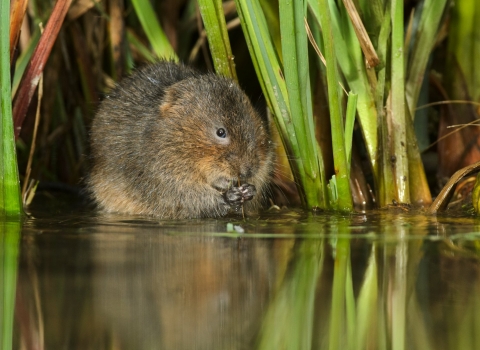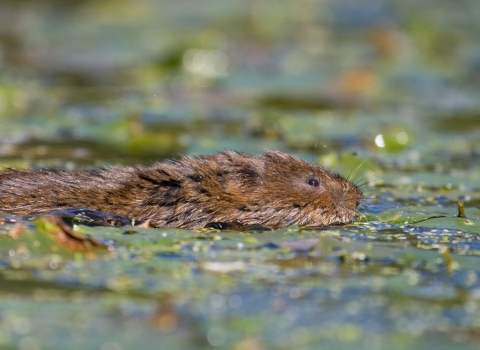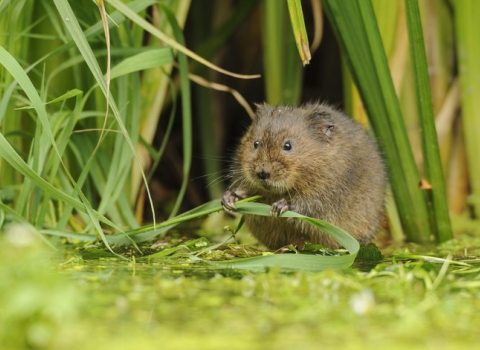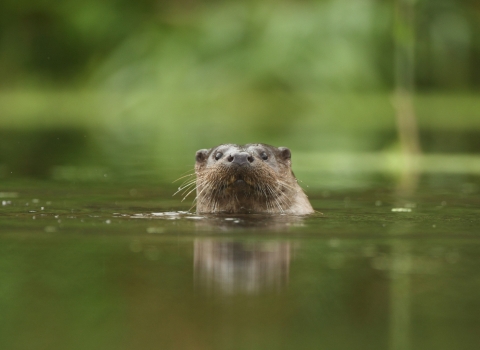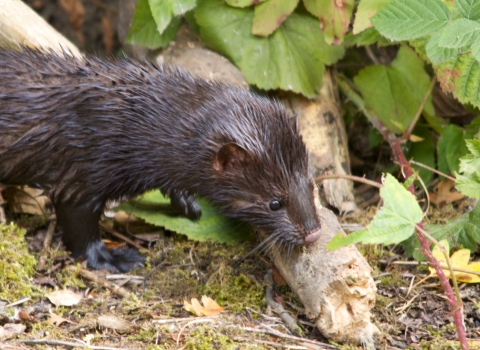Waterways are a vital part of any nature recovery network, as they provide links between and through other habitats and act as wildlife corridors. As part of our work in the Wider Countryside we make waterways better habitats to support a wide range of wildlife, including our elusive and charismatic native mammals.
“The water vole is Britain’s fastest declining mammal”
European Water Vole
The European water vole, a favourite character in the children’s classic The Wind in the Willows, has lost a staggering 95% of its range since 1900. This is largely due to habitat destruction and the introduction of a voracious predator, the American mink.
European Otter
The elusive otter is one of our top predators. Since its lowest population point in the 1970s, a series of reintroductions by The Otter Trust between 1983 and 1999 in the Anglian region helped prevent the UK population from extinction. Recently, natural recovery rate of otters has seen a population boom with them spreading and recovering in the majority of their former range.
American mink
Escaped or intentionally freed from fur farms in the 1960s, the American mink is now well established in the UK. Its carnivorous nature is a threat to our native water vole and ground nesting bird populations.
What we're doing
Our work extends across all three counties, ranging from surveys to develop our knowledge of the range and numbers of these mammals, through to habitat management.
Bedfordshire
In Bedfordshire we have been monitoring mink and water vole populations since 2005. Growing water vole populations were observed between 2008 & 2013 in correspondence with low mink numbers. In recent years water vole numbers have declined with the growth of mink populations in the county, in tandem with the loss and disconnection of essential water vole habitat.
However, all is not lost, Bedfordshire still retains a small number of populations and the project is ready to take on the challenge of ensuring water voles have a more sustainable future.
To find out more information or join the project email: rivers@wildlifebcn.org and include ‘Bedfordshire’ in the subject or email text.
Northamptonshire
New in 2019, the Water Vole, Otter and Mink Survey Project aims to understand the distribution of water vole, otter and mink populations in the Nene Valley and compare that with previous records.
The first year of the project will be undertaking presence/absence surveys at three key locations: Summer Leys, Nene Wetlands, and Barnwell. Once established the project will expand surveying across the Nene Valley and work towards making opportunistic conservation interventions to improve habitat where possible.
To find out more information or join the project email: rivers@wildlifebcn.org and include ‘Northamptonshire’ in the subject or email text.
Cambridgeshire
Though Cambridgeshire has no regular water vole survey programme, generally water voles are doing well in the Cam catchment. The key areas of focus of our activities are on the Bourn Brook where numbers have been increasing in recent years following work to improve habitat and monitor mink.
The fens is also a key area for water vole, where they seem to be more resilient to the presence of mink due to the complex and maze-like network of water courses and ditches. We are very keen to obtain records of water vole from this area to help raise its profile nationally as an important habitat, this is thanks largely to its connectedness and the maintenance work of its internal drainage boards.
To find out more information about our Cambridgeshire project email: rivers@wildlifebcn.org and include ‘Cambridgeshire’ in the subject or email text.
How you can help
There are specific ways you can help us with our work, and more general things you can do to help protect all of our waterways and help our rivers to thrive.
Volunteer with us
If you like spending time out and about looking for animal signs then join our survey projects as a surveyor. You will get ID and recording training and can survey a stretch of river close to your home. The time commitment is only once a month between April and October.
We are particularly interested if you are living in the Nene Valley and visit Summer Leys, Nene Wetlands and Barnwell.
Email us at rivers@wildlifebcn.org, including your county in your subject line, to find out more.
Report your sightings
If you spend a lot of time out by rivers anyway and see water voles, otters, and mink, then you can just send your sightings to rivers@wildlifebcn.org, including your county in your subject line.
Please tell us what you have seen (living or deceased creatures, signs such as spraint or feeding), when you saw it (including time of day) and as accurate a note of where as possible.
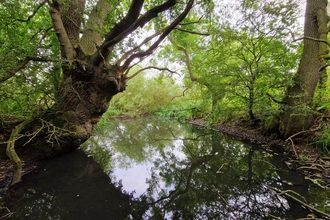
Wild about Water: Strawberry Hill
Water is essential to all living things. The availability of water within an ecosystem can change the landscape dramatically, both…
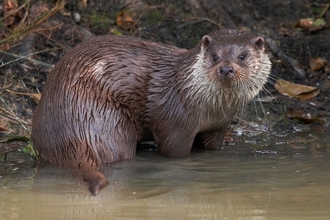
Cambridgeshire otter survey results 2022
The results of the Cambridgeshire 2022 otter survey reveal healthy populations in the county's waterways
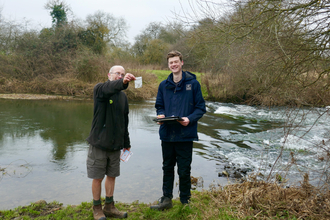
Cambridgeshire otter survey
50 surveyors, 300 sites, how many otters? Held every five years, an otter survey is currently underway across Cambridgeshire exploring…

